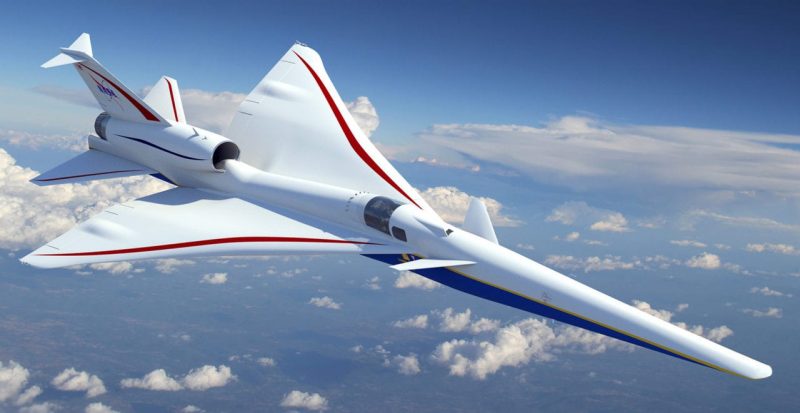Supersonic flight unlocked by real-time boom predictions
Crucial to the industry’s ability to bring supersonic civil aviation back in a palatable fashion is the fact that modern technology allows the real-time prediction of how sound waves will reach the ground, at what level and where.
It has been illegal for commercial flights to break the sound barrier over US for nearly 50 years, and no US commercial supersonic flights have happened — over land or sea — since the Concorde last flew in 2003. Everyone wants to get where they’re going faster, but gaining regulatory approval to bring supersonic travel back into vogue requires proof that it can happen without causing a disturbance.
Previously, that was unrealistic. Now, engineers say advances in aircraft design can mitigate the “sonic boom” to the point that it won’t bother people.
“Modern design tools are ready for shaped boom design,” said Peter Iosifidis, director of the X-59 QueSST low-boom demonstrator that Lockheed Martin’s Skunk Works division is building for NASA, while speaking at an SAE International panel on supersonic technology in Charleston, South Carolina.
Directing the air in a way that will mitigate the boom requires an extreme level of precision, which is made possible by current machining processes.
Last year, NASA carried out testing in Galveston, Texas to determine what noise level people find acceptable. Authorities used an F-18 to execute supersonic dives that would create a soft thump at similar levels to the expected supersonic levels, then collected feedback from more than 500 residents. A perceived decibel level of around 75 is where people generally started to be bothered by the sound, according to Iosifides.
“It was generating a sonic boom level through that demonstration that was at the same level as what this airplane is going to generate, and some people didn’t even hear it,” he said. “That was very encouraging.”
The X-59 is a demonstrator built to be as cheap as possible and focused on one goal, so most non-crucial components are being sourced.
“Almost all the subsystems inside the airplane are either reused, repurposed or commercially off the shelf,” Iosifidis said. For example, the canopy and seat come from a T-38 Talon, the landing gear was taken from an F-16 and the engine is a GE F414, which has been used in jets such as the F/A-18E/F Super Hornet.
The jet has no forward viewport. Pilots are “flying on, basically a T.V. screen, if you will, and a hand vision system,” Iosifidis said.
Largely, the pilot experience is similar to other commercial flying, according to Laura Smith-Velazquez, principal investigator for sonic boom displays on the X-59. A senior systems analyst at Collins Aerospace and a pilot herself, Smith-Velazquez said there shouldn’t be much additional fatigue; there is primarily one change in mindset that is required.
“We tend to fly with distance and range; A supersonic pilot thinks in terms of time. You’re going so fast, distance just flies by. You’re thinking ahead … it’s all done in terms of time. When do I have to do this stuff? Instead of range markers, we have time markers [on the instruments] to give them that concept.”
That’s part of the reason the ability to monitor changes to trajectory and the impact that will have in real time are significant. If a pilot receives an updated corridor from air traffic control and adjusts his heading, the computer can monitor projections up to three minutes out and calculate sonic boom impact data for where he is and where it looks like he will be at any given time.
To do that, engineers need to know not only precisely how sound travels, but the local weather around the plane at any given time.
“If we can understand how they travel through the atmosphere, we know how much of the atmosphere we need to characterize,” Smith-Velazquez said.
That’s important if the new regulations are going to shift to require that the sound hitting the land stay below a certain level. The same speed at the same distance might result in a different amount of perceived noise on the ground, depending on atmospheric conditions. All of those calculations need to be done (and constantly redone) on the fly.
According to the experts, they’re just about ready to do that.
“It’s just a matter of time because I think the technical hurdles have been overcome and it’s just a matter of overcoming the regulatory hurdles now,” Iosifidis said.


